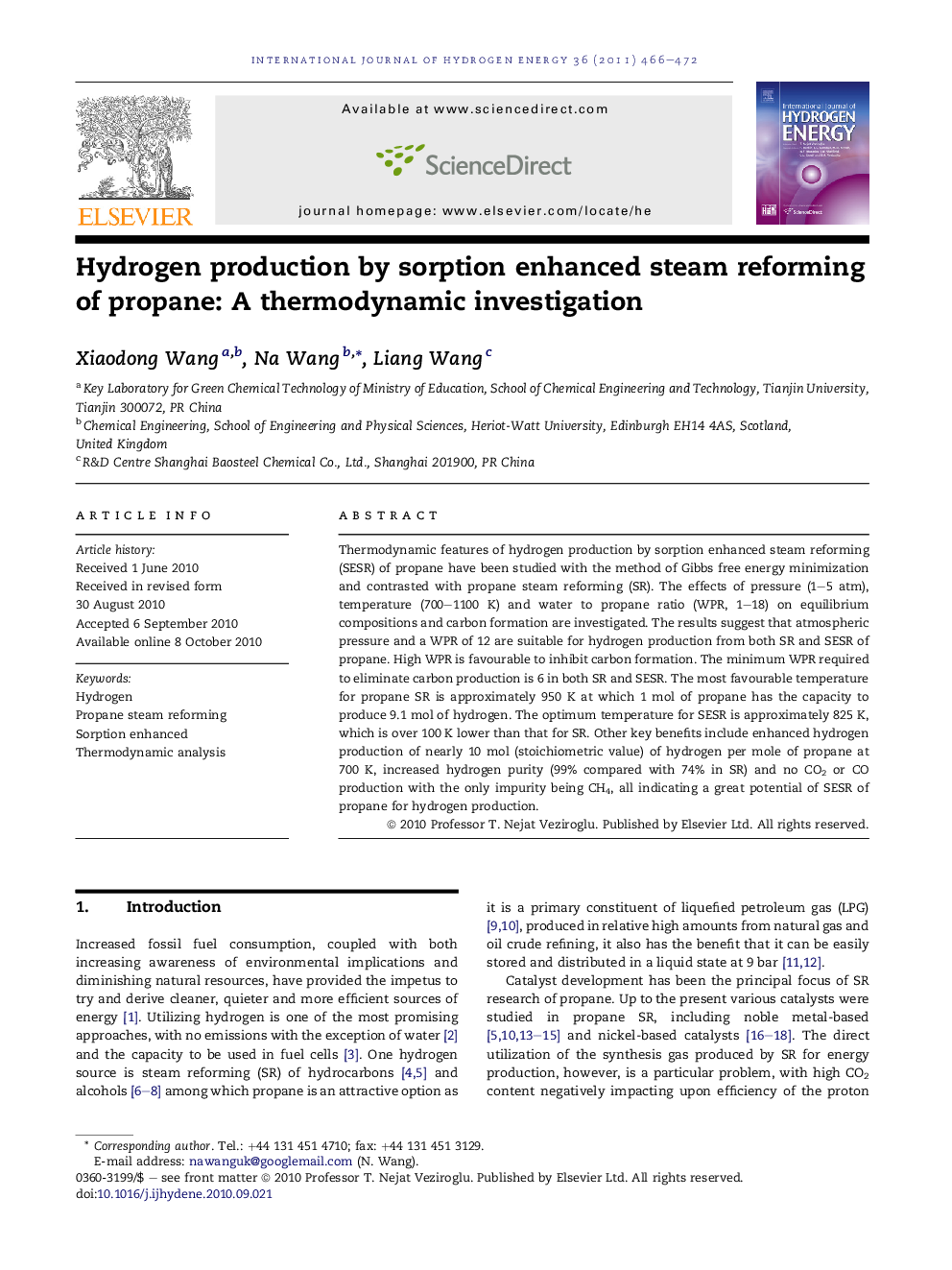| Article ID | Journal | Published Year | Pages | File Type |
|---|---|---|---|---|
| 1277797 | International Journal of Hydrogen Energy | 2011 | 7 Pages |
Thermodynamic features of hydrogen production by sorption enhanced steam reforming (SESR) of propane have been studied with the method of Gibbs free energy minimization and contrasted with propane steam reforming (SR). The effects of pressure (1–5 atm), temperature (700–1100 K) and water to propane ratio (WPR, 1–18) on equilibrium compositions and carbon formation are investigated. The results suggest that atmospheric pressure and a WPR of 12 are suitable for hydrogen production from both SR and SESR of propane. High WPR is favourable to inhibit carbon formation. The minimum WPR required to eliminate carbon production is 6 in both SR and SESR. The most favourable temperature for propane SR is approximately 950 K at which 1 mol of propane has the capacity to produce 9.1 mol of hydrogen. The optimum temperature for SESR is approximately 825 K, which is over 100 K lower than that for SR. Other key benefits include enhanced hydrogen production of nearly 10 mol (stoichiometric value) of hydrogen per mole of propane at 700 K, increased hydrogen purity (99% compared with 74% in SR) and no CO2 or CO production with the only impurity being CH4, all indicating a great potential of SESR of propane for hydrogen production.
